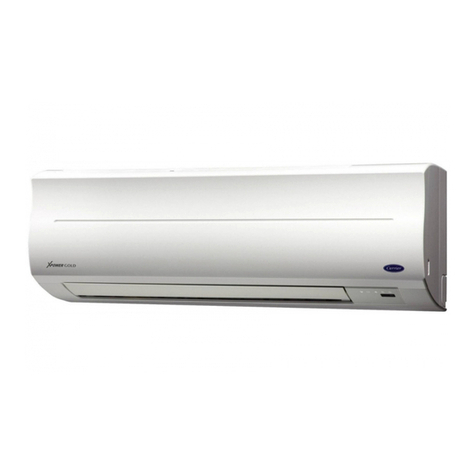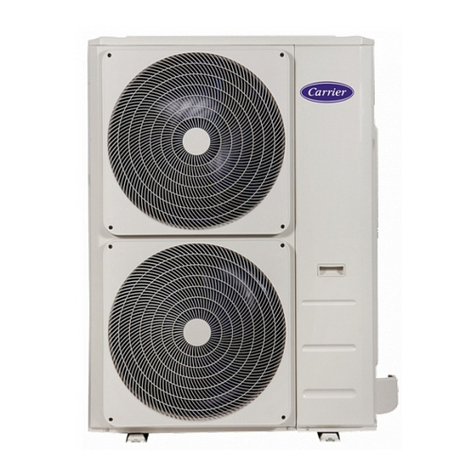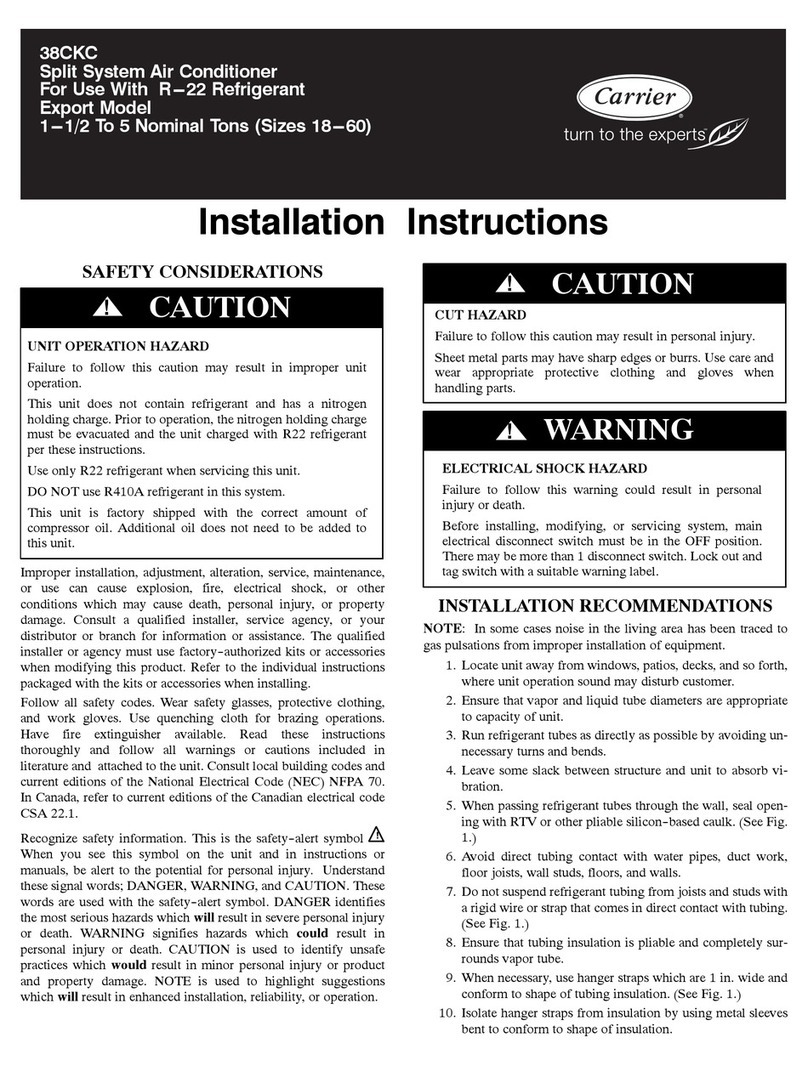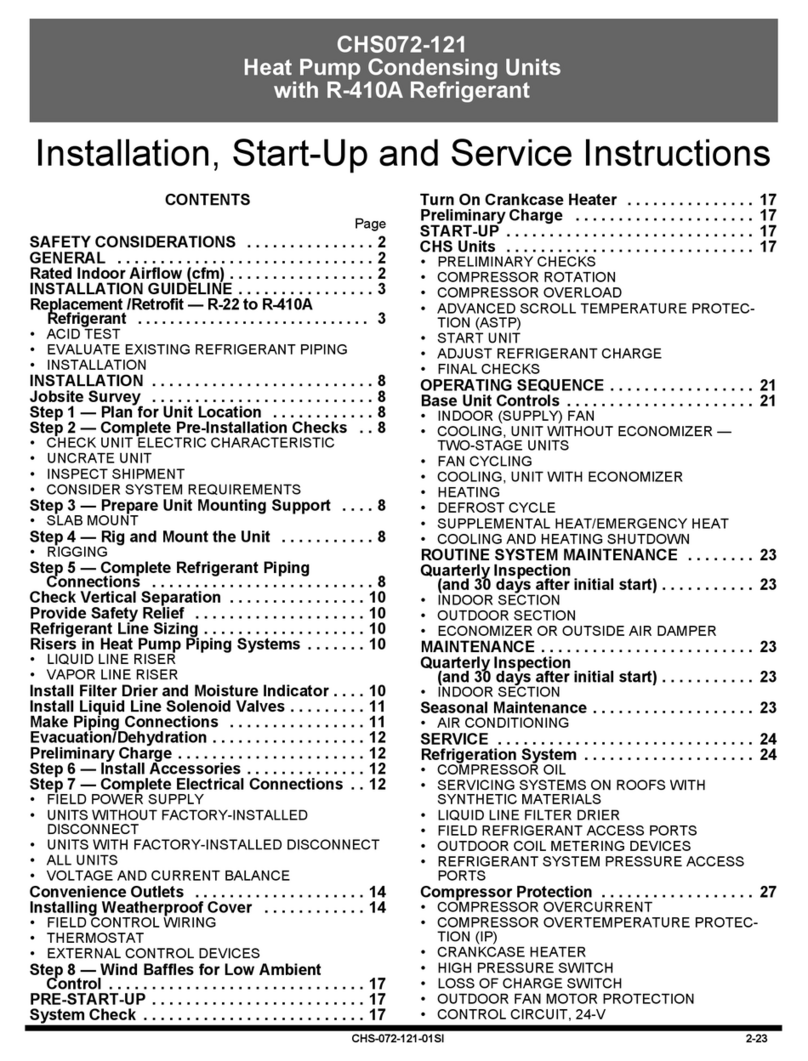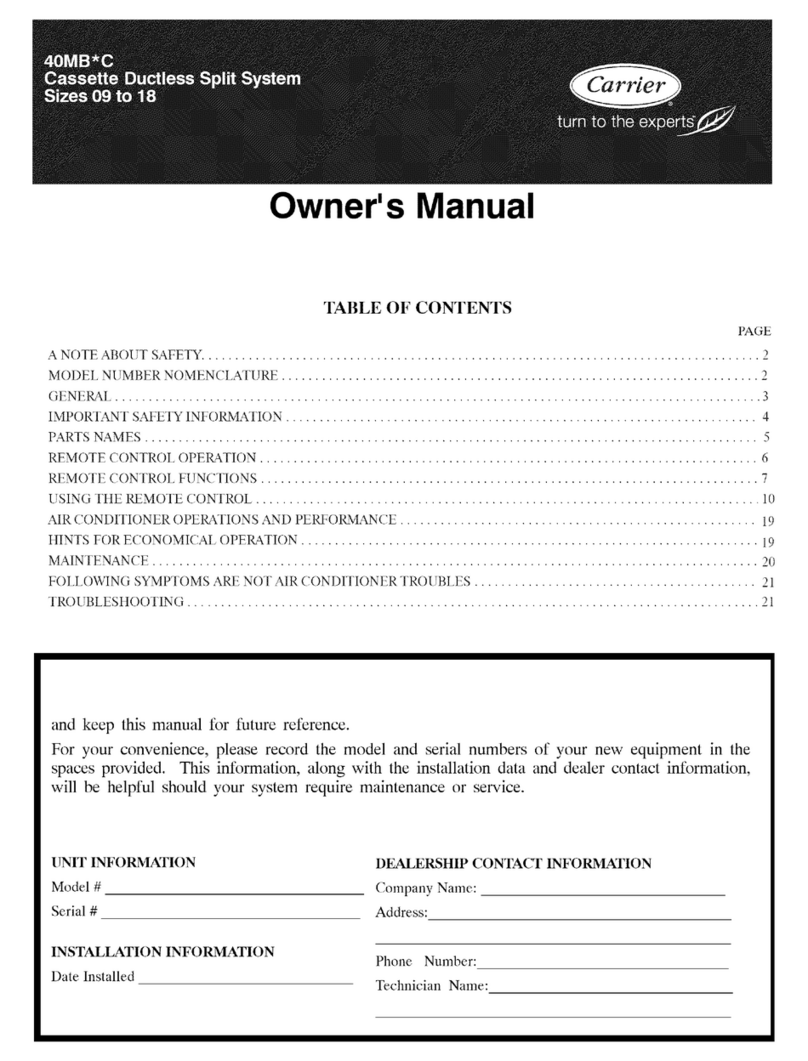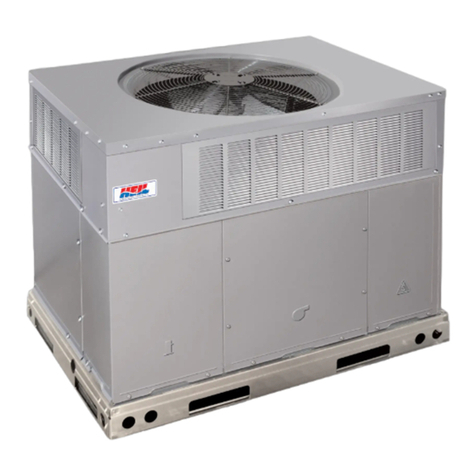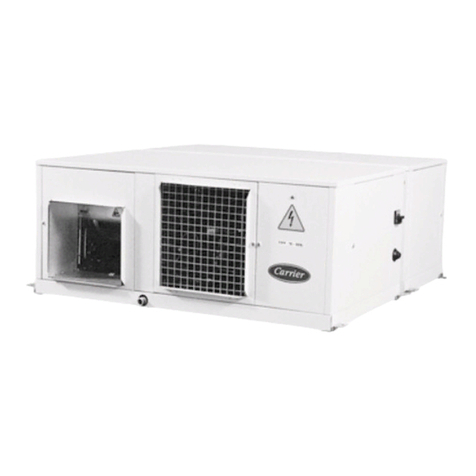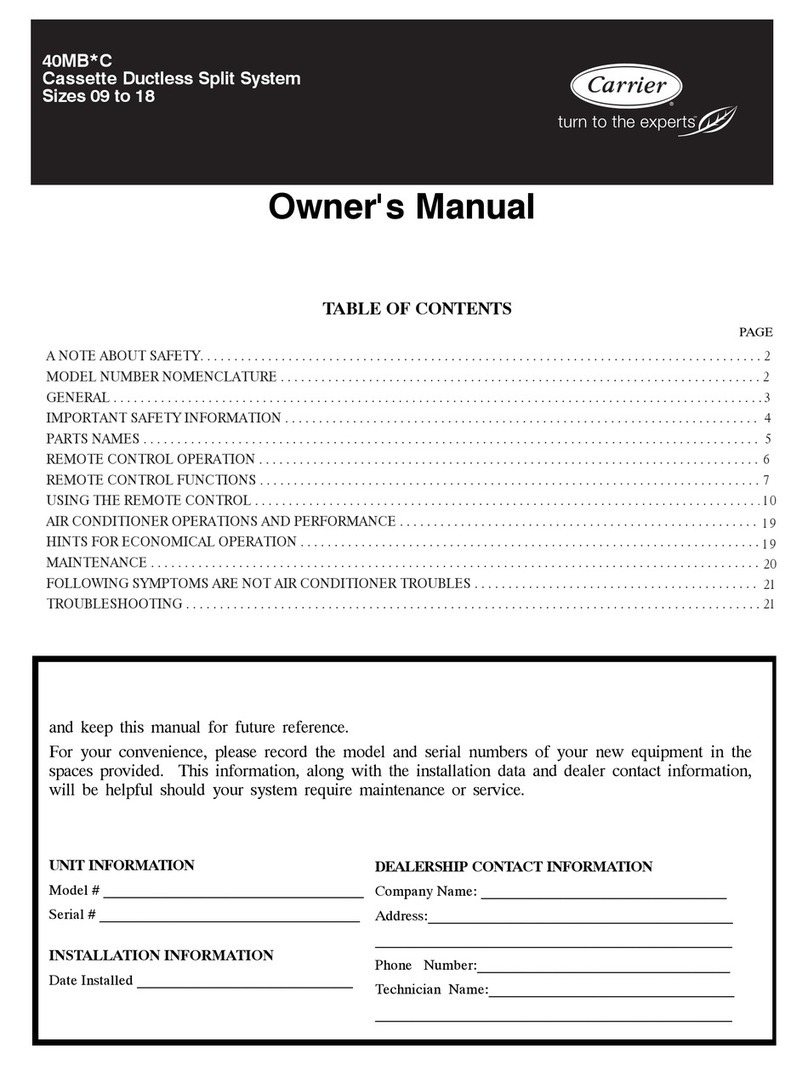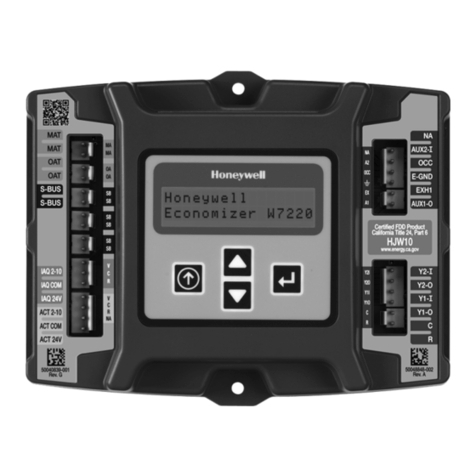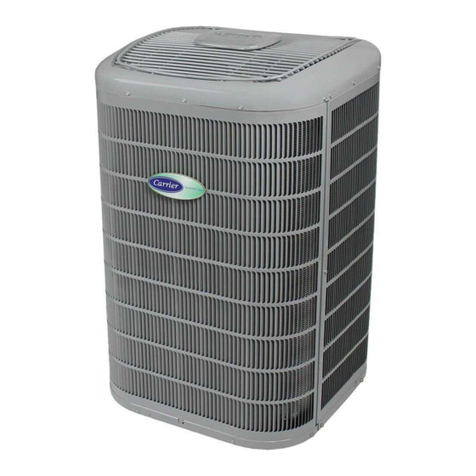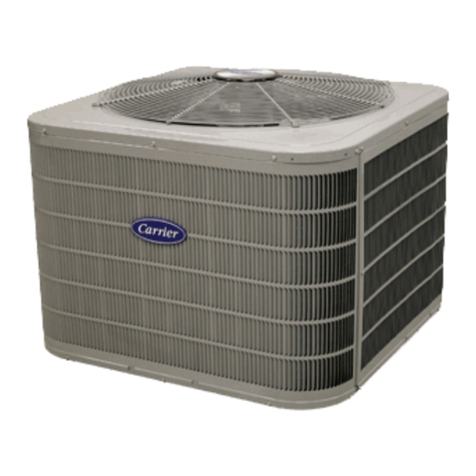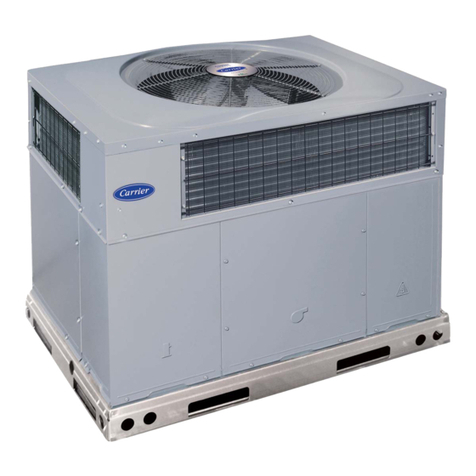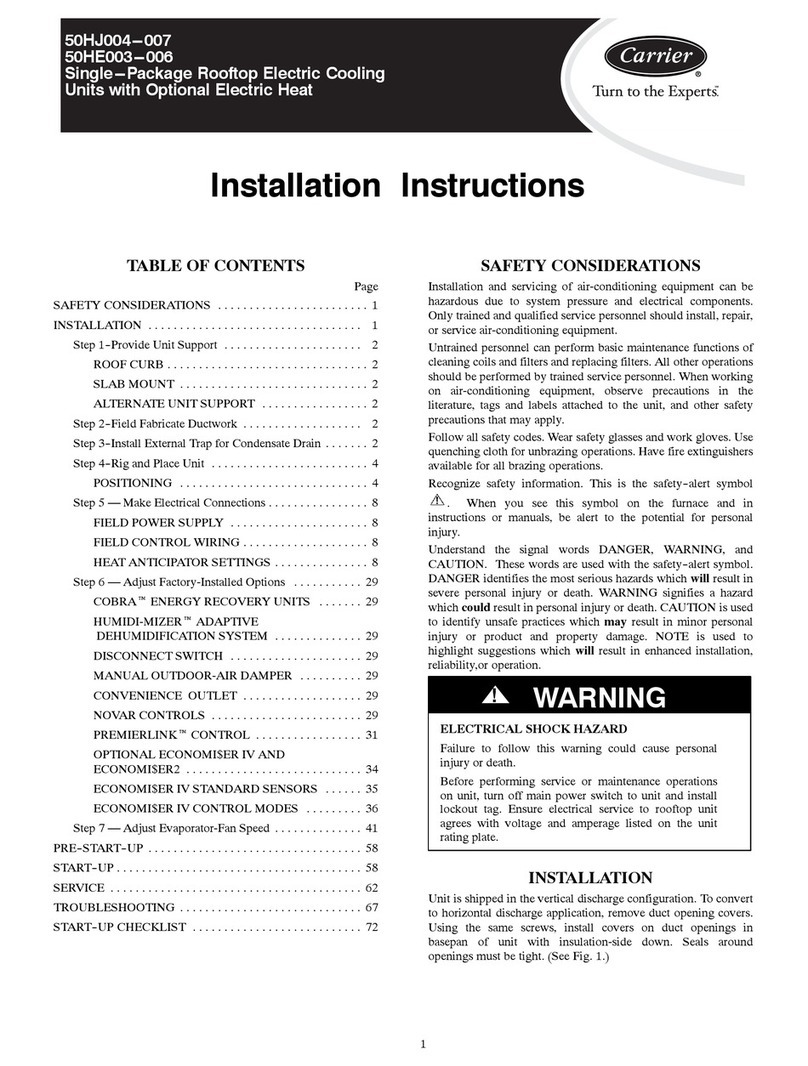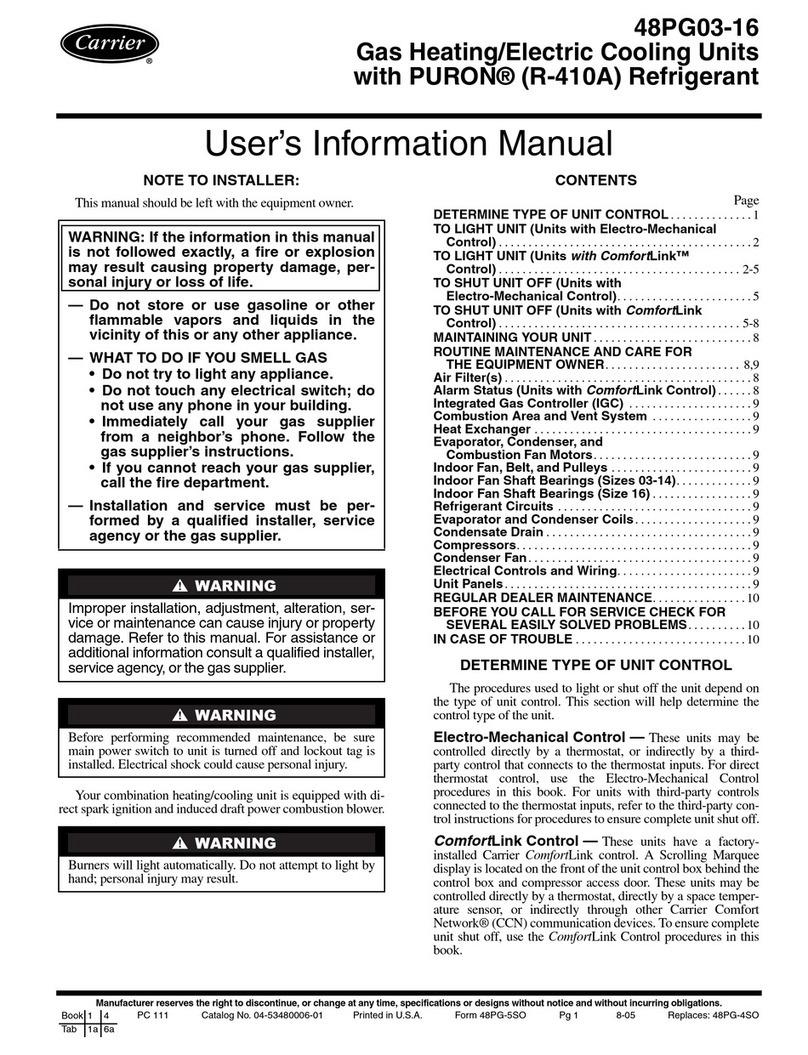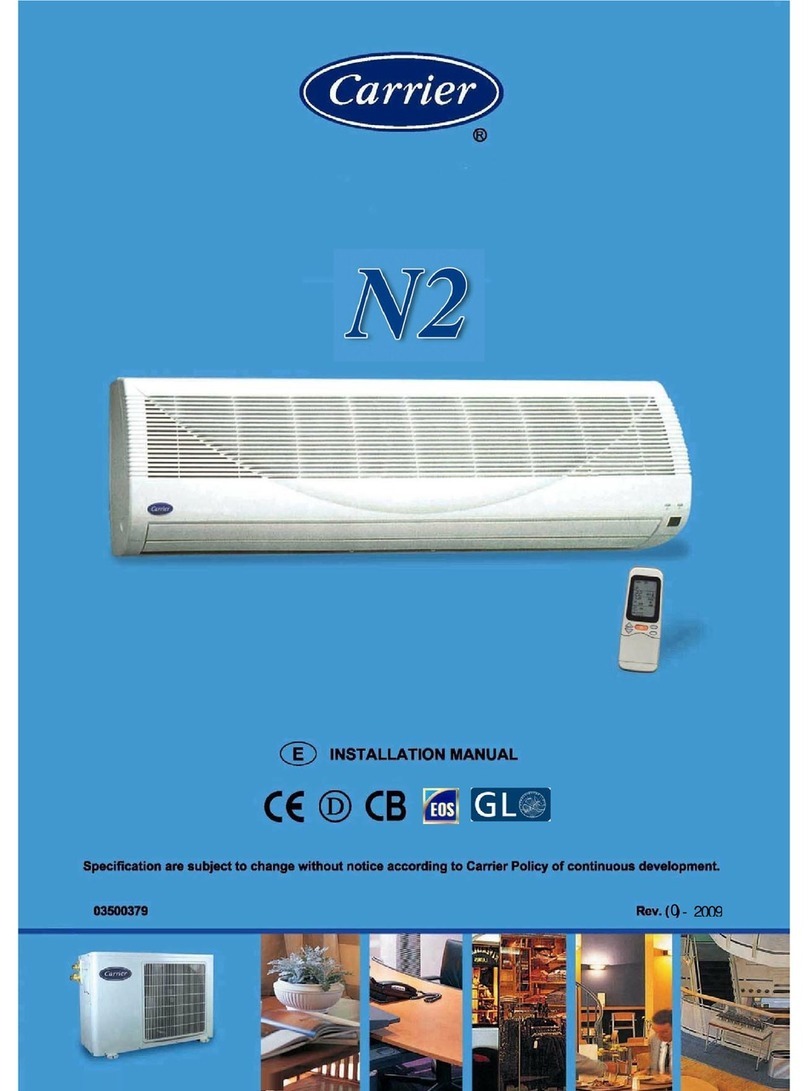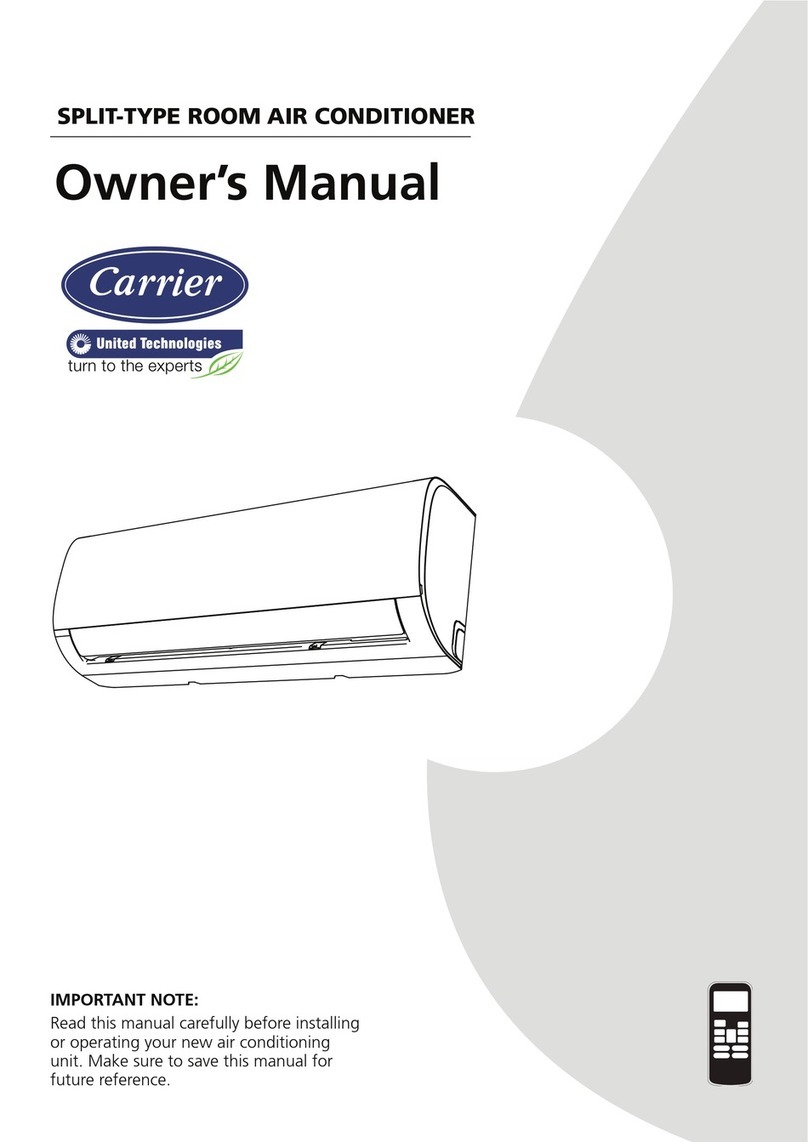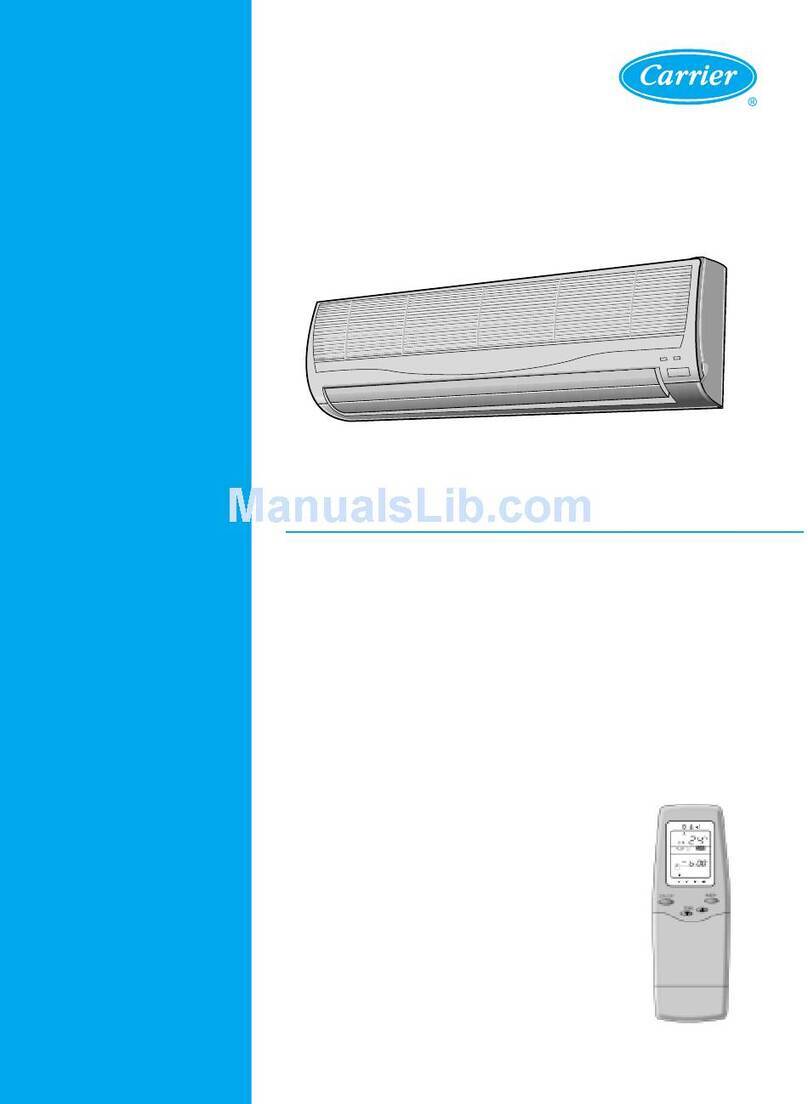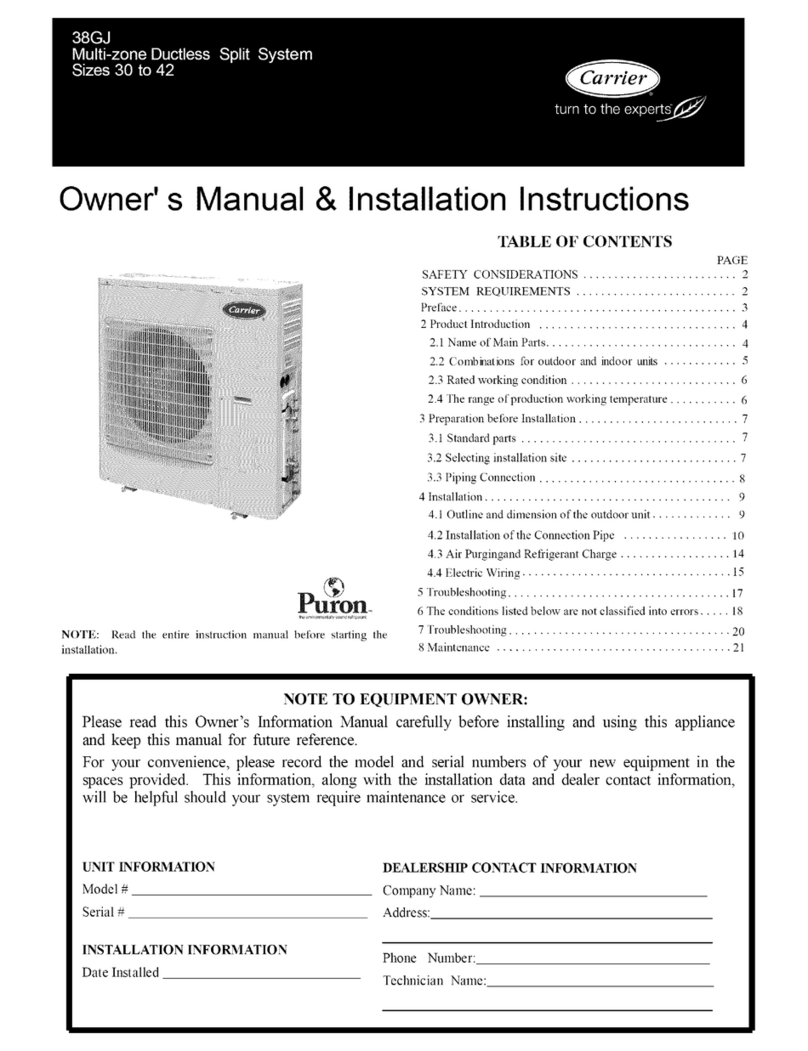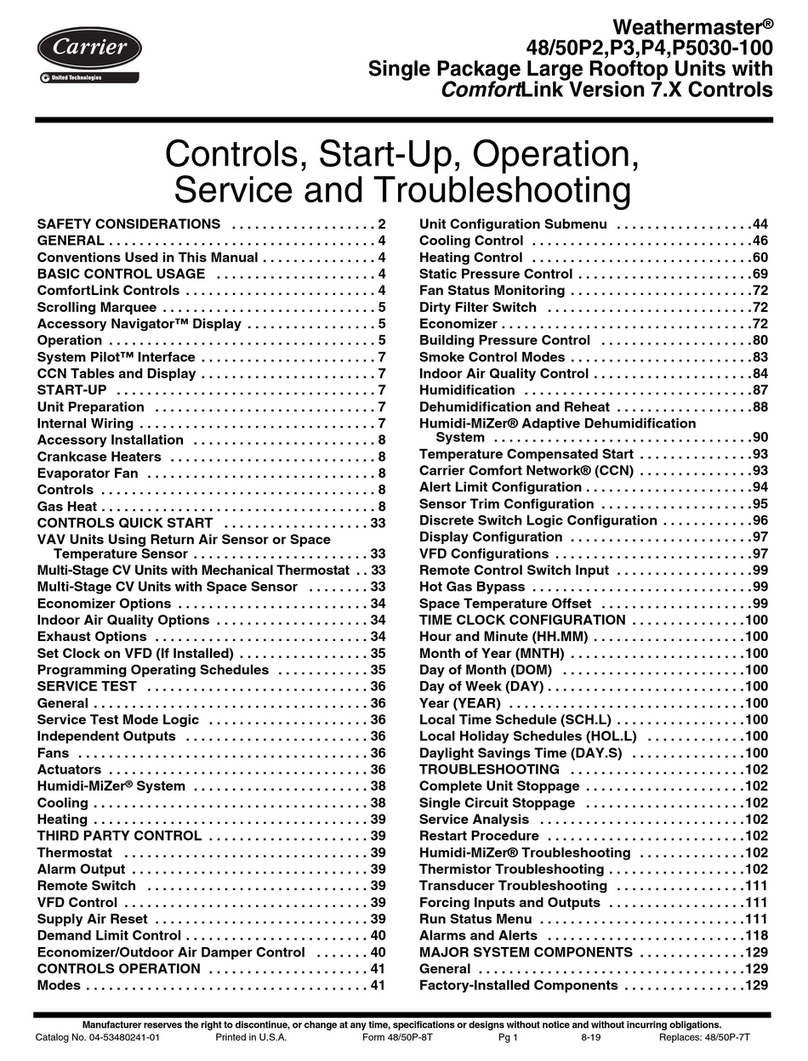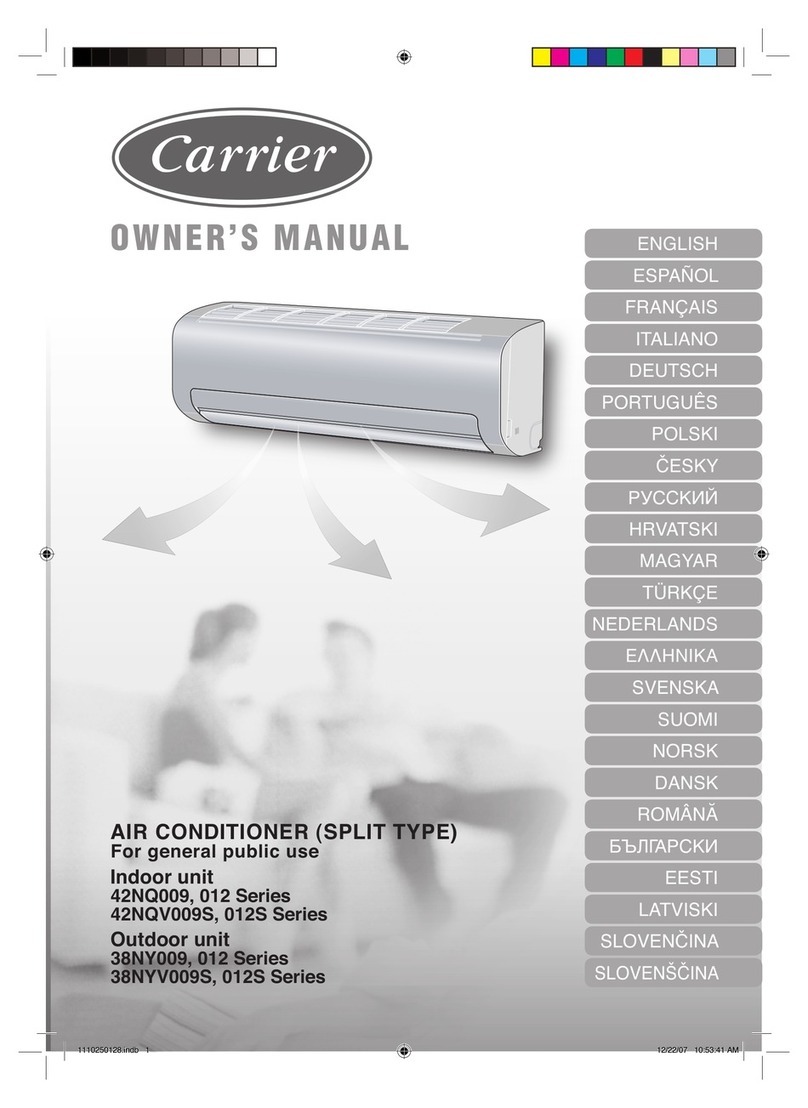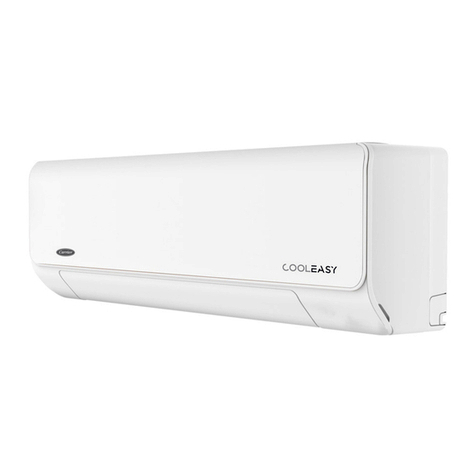
48VGUK: Installation Instructions
Manufacturer reserves the right to change, at any time, specifications and designs without notice and without obligations.
2
In Canada refer to the current editions of the National Standards of
Canada CAN/CSA-B149.1 and .2 Natural Gas and Propane Installation
codes, and Canadian Electrical Code CSA C22.1
Recognize safety information. This is the safety-alert symbol . When
you see this symbol on the unit and in instructions or manuals, be alert to
the potential for personal injury. Understand these signal words:
DANGER, WARNING, and CAUTION. These words are used with the
safety-alert symbol. DANGER identifies the most serious hazards which
will result in severe personal injury or death. WARNING signifies
hazards which could result in personal injury or death. CAUTION is
used to identify unsafe practices which may result in minor personal
injury or product and property damage. NOTE is used to highlight
suggestions which will result in enhanced installation, reliability, or
operation.
Most states is the USA and jurisdictions in Canada have laws that
require the use of Carbon Monoxide (CO) alarms with fuel burning
products. Examples of fuel burning products are furnaces, boilers, space
heaters, generators, water heaters, stoves/ranges, clothes dryers,
fireplaces, incinerators, automobiles, and other internal combustion
engines. Even if there are no laws in your jurisdiction requiring a CO
Alarm, it’s highly recommended that whenever any fuel burning product
is used in or around the home or business that the dwelling be equipped
with a CO Alarm(s). The Consumer Product Safety Commission
recommends the use of CO Alarm(s). The CO Alarm(s) must be
installed, operated, and maintained according to the CO Alarm
manufacturer’s instructions. For more information about Carbon
Monoxide, local laws, or to purchase a CO Alarm only, please visit the
following website https://www.kidde.com
Introduction
This unit (see Fig. 1) is a fully self-contained, combination Category I
gas heating/electric cooling unit designed for outdoor installation (See
Fig. 3 and Fig. 4 for unit dimensions). All unit sizes have return and
discharge openings for both horizontal and downflow configurations,
and are factory shipped with all downflow duct openings covered. Units
may be installed either on a rooftop or on a cement slab. (See Fig. 5 for
roof curb dimensions).
In gas heating mode, this unit is designed for a minimum continuous
return-air temperature of 55°F (13°C) db and a maximum continuous
return-air temperature of 80°F (27°C) db. Failure to follow these
return-air temperature limits may affect reliability of heat exchangers,
motors, and other components.
Models with a “U” in the fifth position of the model number are
dedicated to the Ultra Low NOx emissions requirements of 14
nonograms/joule and must be installed in California Air Quality
Management Districts or any other regions in North America where
Ultra Low NOx rules exist.
WARNING
!
CARBON MONOXIDE POISONING HAZARD
Failure to follow this warning could result in personal injury and/or
death.
Carbon Monoxide (CO) is a colorless, odorless, and tasteless poisonous
gas that can be fatal when inhaled. Follow all installation, maintenance,
and service instructions. See additional information below regarding
the installation of a CO Alarm.
WARNING
!
ELECTRICAL SHOCK HAZARD
Failure to follow this warning could result in personal injury or death.
Before installing or servicing system, always turn off main power to
system and install lockout tag. There may be more than one disconnect
switch. Turn off accessory heater power switch if applicable.
WARNING
!
PERSONAL INJURY AND ENVIRONMENTAL HAZARD
Failure to relieve system pressure could result in personal injury and/or
death.
1. Relieve pressure and recover all refrigerant before servicing
existing equipment, and before final unit disposal. Use all
service ports and open all flow-control devices, including
solenoid valves.
2. Federal regulations require that you do not vent refrigerant into
the atmosphere. Recover during system repair or final unit
disposal.
CAUTION
!
FIRE, EXPLOSION, ELECTRICAL SHOCK AND
CARBON MONOXIDE POISONING HAZARD
Failure to follow this warning could result in personal injury or unit
damage.
A qualified installer or agency must use only factory-authorized kits or
accessories when modifying this product.
CAUTION
!
CUT HAZARD
Failure to follow this caution may result in personal injury.
When removing access panels (see Fig. 22) or performing maintenance
functions inside your unit, be aware of sharp sheet metal parts and
screws. Although special care is taken to reduce sharp edges to a
minimum, be extremely careful and wear appropriate protective
clothing, safety glasses and gloves when handling parts or reaching into
the unit.
WARNING
!
PERSONAL INJURY AND PROPERTY DAMAGE
HAZARD
For continued performance, reliability, and safety, the only approved
accessories and replacement parts are those specified by the equipment
manufacturer. The use of non-manufacturer approved parts and
accessories could invalidate the equipment limited warranty and result
in fire risk, equipment malfunction, and failure. Please review
manufacturer's instructions and replacement part catalogs available
from your equipment supplier.
NOTICE
!
If the unit gasketing or insulation must be replaced, ensure the material
used is compliant with the two agency requirements listed.
1. Insulation and adhesives shall meet NFPA 90.1 requirements for
flame spread and smoke generation.
2. Cabinet insulation shall meet ASHRAE Standard 62.2.
